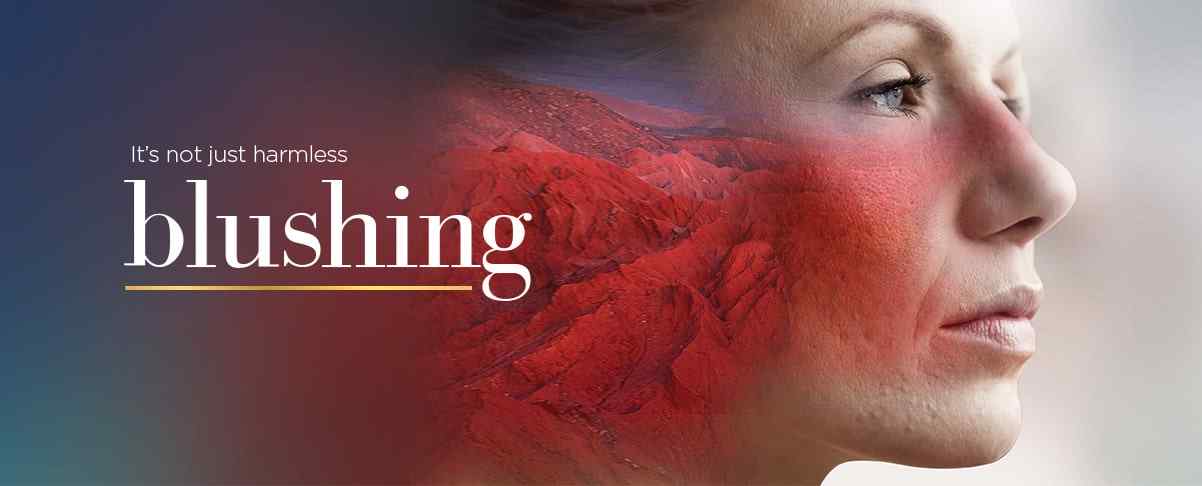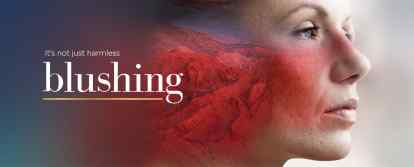The Masks We Wear: Rosacea Triggers, Treatments, and Compounded Medications

Rosacea is considered to be a common skin condition that may affect as many as 14 million people in the United States. Even though rosacea is common, living with the condition can make you feel like you are anything but ordinary. Everything from the weather to the food you eat and your emotions can show plainly on your face for the world to see.
Rosacea truly can be like the mask you wear, and one you can't simply take off. However, with a deep dive into the underlying rosacea triggers and the right compounded medicine solutions, you may see some improvement.
In general, rosacea is characterized by small bumps that are pus-filled and red and facial flushing or redness. Many sufferers also experience swelling and skin sensitivity, and some people with rosacea have problems with dry or rough, scaly skin that stings and burns. The symptoms may worsen during a "flare-up" and get better.
Rosacea can actually be one of four types or have characteristics of one of four types of rosacea. The symptoms of each subtype may be present in one individual, so being diagnosed with one form of rosacea may not mean you don't also have another subtype of the skin condition.
Erythematotelangiectatic Rosacea
Erythematotelangiectatic (ETR) rosacea is the most common subtype of rosacea. The general symptoms of ETR rosacea include facial flushing or redness, which may mean red cheeks, forehead, chin, or otherwise. Small blood vessels that are directly located under the skin are also more visible.
Papulopustular rosacea
Papulopustular rosacea, which is also called acne rosacea, is characterized by acne-like bumps that usually show up in patches on the forehead, chin, or cheeks. Acne around the mouth is also common. However, the bumps can also develop on the neck and chest or scalp. In addition to the bumps, most people with acne rosacea will also experience flushing or redness of the face. Unlike normal acne bumps, acne rosacea bumps can be slow to go away.
Phymatous Rosacea
Phymatous rosacea can cause thickening and scarring of the skin, which may make the skin appear discolored, swollen, or bumpy. Usually, this form of rosacea will cause redness around the nose or on the nose. An individual with phymatous rosacea may have enlarged pores of the nose or even a nose that appears larger than normal.
Ocular Rosacea
Ocular rosacea is a unique form of rosacea in which the symptoms of the condition can directly affect the eyes or the eyelids. The condition can cause the eyes to be bloodshot, watery, and irritated, but cysts and redness may also show up on both the upper and lower eyelids.
The exact cause of rosacea is not always known. However, researchers do believe the condition can be caused by a combination of things. For example, some genetic qualities may play a role in whether you develop the condition and environmental factors are known as rosacea triggers for most sufferers.
Rosacea is usually diagnosed in people between 30 and 50 years old and is more common among fair-skinned people, especially those with blue eyes and blonde hair. Rosacea also affects women more than men, even though men with rosacea tend to have worse symptoms.
Is Rosacea an Autoimmune Disease?
Rosacea is not considered an autoimmune disease, but a complex skin condition. However, rosacea may be a marker for certain autoimmune diseases. For example, females with rosacea may be twice as likely to have autoimmune diseases like celiac disease.
While rosacea is not an autoimmune disease, the inflammation that is prevalent with the skin condition is something generated by the immune system. If an individual comes in contact with rosacea triggers, inflammatory proteins are released by the immune system, which leads to problems with facial flushing, skin inflammation, and more visible blood vessels.
As noted, certain environmental factors do seem to be frequent rosacea triggers. Some of the most common environmental triggers include:
-
Exposure to extreme temperatures or wind
-
Caffeine, hot drink, or alcohol consumption
-
Eating spicy foods or certain foods
-
Exposure to the sun
-
Certain cosmetics
Some people can also have rosacea triggers that are more biological in nature; they may experience a flare-up during menstruation, emotional situations, stress, or physical activity. Some medications can also cause a flare-up, such as blood pressure medicines.
Skin mites - Individuals with rosacea can have 10 times as many demodex mites on their skin, which can lead to bacterial deposits and heightened inflammation. These mites can be easily treated with tea tree oil, topical antibiotics, or ivermectin cream, and in turn, symptoms of rosacea may be reduced.
Small intestine bacteria overgrowth (SIBO) - SIBO is common in people with celiac disease, who are lactose intolerant, or have issues with gluten. The excess of bacteria in the intestines can lead to undue inflammatory proteins in the body, which can be a rosacea trigger. SIBO is most often treated with antibiotics and dietary changes, and treatment may improve symptoms of rosacea.
Heliobacteria Pylori - H. pylori is a bacterium that can irritate the lining of the gut, cause ulcers, and boost inflammatory proteins in the body. The excessive levels of inflammatory proteins can exacerbate symptoms of rosacea. Thankfully, the condition is usually easily treated with a round of antibiotics.
Even the best rosacea cream will not cure rosacea. Usually, doctors will recommend that you take a multifaceted approach to control some of your symptoms.
Lifestyle Changes
Making certain lifestyle changes can sometimes keep flare-ups at bay or less severe when they do occur. One big change to make is doing what you can to be good to your skin. Use only gentle cleansing methods and look carefully at the ingredients in your skin-care products. Be sure to opt for water-based products, whether it is makeup or sunscreen, that do not contain added oils. A few other ingredients that may exacerbate the symptoms of rosacea include:
-
Alcohol
-
Witch hazel
-
Menthol
-
Exfoliants
A few other lifestyle changes to make include:
-
Avoiding sunlight and direct wind
-
Avoid caffeinated drinks and alcohol
-
Consider following a rosacea diet
Systematic Medications
Occasionally, your doctor may prescribe oral medications that may help with rosacea symptoms, especially if it appears you are developing a skin infection due to your symptoms. For example, your doctor may offer antibiotics or oral acne medication to take for a short period of time. While some systematic medications may soothe some of your symptoms for the short term, these are not long-term solutions.
Topical Medications
Topical medications may soothe some redness or bumps associated with rosacea. For example, ivermectin cream may be prescribed for a short period of time, but the medication does not usually provide improvements until you have used the cream over a substantial length of time. Oxymetazoline may also be used to decrease the size of blood vessels. For some patients, topically applied oxymetazoline may help reduce the appearance of blood vessels and swelling associated with rosacea. Limited evidence has suggested the medication may offer "sustained improvements" for as long as 17 months, especially for patients between 55 and 70 years old.
Even though there is no cure for rosacea, the best rosacea treatment can usually mean a noteworthy improvement of your symptoms. While certain medications may help on their own, many patients see the best outcome by working with a compounding pharmacy to get a formulated solution that is specifically designed for the rosacea symptoms they are facing.
One of the most popular compounded solutions involves combining azelaic acid gel, brimonidine gel, and niacinamide. Here is a look at some of these ingredients and the research into why they may be effective for rosacea symptoms.
Azelaic Acid Gel
Azelaic acid is a dicarboxylic acid, which is a naturally occurring acid. One of the major advantages of azelaic acid is it can be effective in reducing acne-like bumps that are associated with papulopustular rosacea. The medication was tested in two clinical trials involving 664 patients. After applying the gel for 12 weeks, study participants experienced a 15 percent reduction in the number of bumps associated with rosacea.
Brimonidine Gel
Brimonidine gel is an adrenergic agonist that is commonly prescribed for the treatment of rosacea. Topical application of the medication decreases the superficial redness of the skin that is associated with rosacea by shrinking the size of inflamed blood vessels.
Niacinamide
A type of vitamin B, niacinamide helps reduce the appearance of acne bumps related to rosacea. Two randomized, controlled trials have been performed that showed a moisturizer made with a combination of niacinamide and glycerin offered rapid improvement of the moisture levels and smoothness of the outer layer of the skin, and those improvements were sustained over a period of 35 days.
At Harbor Compounding Pharmacy, we strive to give every patient the utmost care when it comes to some of the most challenging conditions. From formulating the best rosacea treatment possible to consulting with our patients to determine what specific skin concerns they have, our pharmacists will work with your doctor to make sure you get the best of care. Reach out to us today for more information about rosacea medication.



